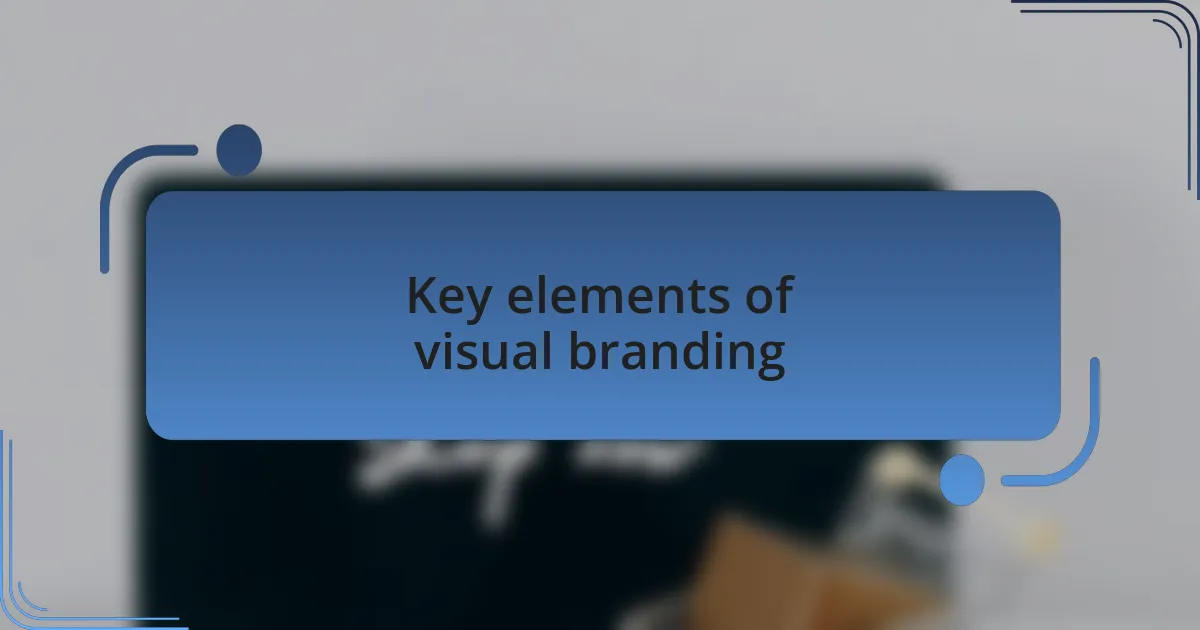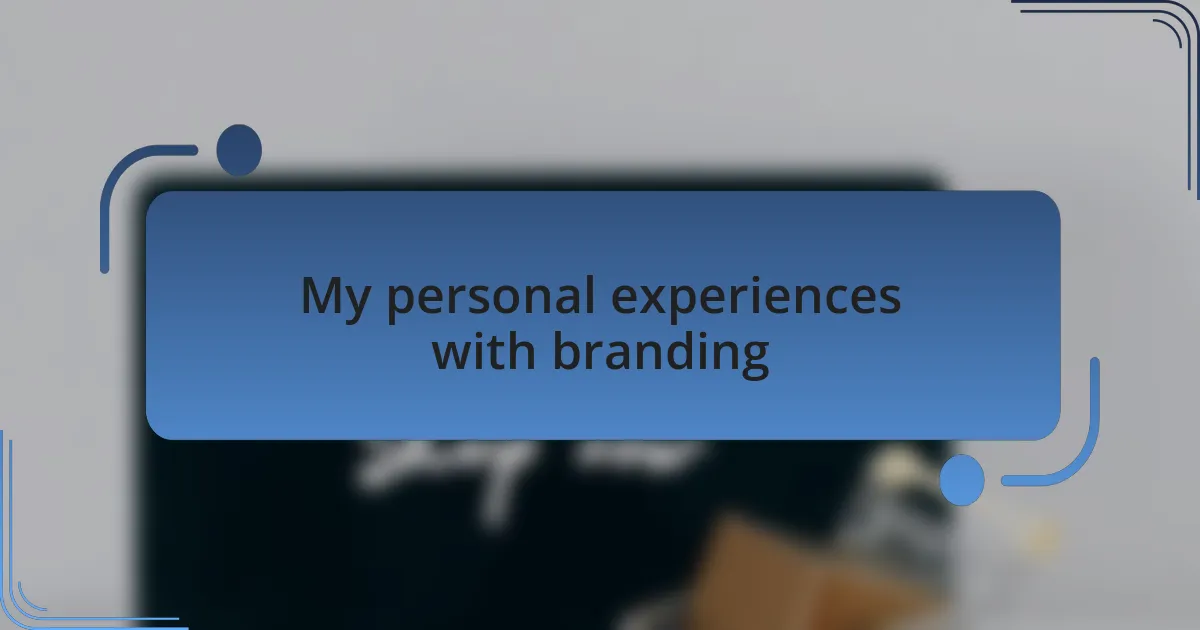Key takeaways:
- Visual branding encompasses logo design, color, typography, and imagery, key to conveying a company’s identity and values.
- Color choice significantly affects emotional tone and first impressions, while typography influences readability and brand perception.
- Using authentic imagery enhances connection and authenticity, making the brand more relatable to the audience.
- Consistency across all branding elements builds trust and fosters deeper relationships with customers.

Understanding visual branding
Visual branding is more than just a logo; it encapsulates the essence of a company’s identity and communicates its values instantly. I remember when I first designed a visual brand for a small local business; the challenge was to express their passion for sustainability in their logo and color palette. It struck me how unique visuals can draw customers in, creating a lasting impression the moment they land on a website.
Color, typography, and imagery all play pivotal roles in shaping a brand’s personality. Have you ever felt a sense of warmth and comfort from a cozy cafe simply because of its choice of soft colors and inviting fonts? I know I have, and it’s fascinating how those elements evoked feelings before I even stepped inside. This demonstrates that visual branding should evoke emotions and foster connections.
Logo placement, consistency across platforms, and the thoughtful selection of imagery create a cohesive experience for users. I often advise clients to think of their branding as a story—what narrative do they want to tell? This perspective helps in crafting a visual identity that resonates with the target audience, ultimately forging a deeper relationship and enhancing brand loyalty.

Key elements of visual branding
When I think about color schemes in visual branding, I recall a project where I was tasked with revitalizing a tech company’s online presence. We opted for a vibrant, energetic palette that mirrored innovation and creativity. It was incredible to witness how those colors transformed the company’s image, making it not just visually appealing but also emotionally engaging for the audience. Color, it seems, serves as the first impression and sets the emotional tone for the entire brand experience.
Typography often gets overlooked, but I find it just as critical as colors. I remember refining the font choices for a local boutique, ensuring the typeface matched their playful yet sophisticated vibe. When we switched to a more elegant serif font, it was like finding the perfect outfit that not only complemented their style but also conveyed their brand story. Have you considered how the fonts on your website reflect your brand’s personality?
Imagery is another cornerstone of visual branding. In my experience, using real photos of people enjoying a product can sometimes be more powerful than stock images. For instance, I once helped a restaurant highlight their dishes with vibrant photos taken by a local photographer. Seeing actual customers enjoying their meals added authenticity to their brand. How does the imagery on your site speak to your audience? It’s worth pondering, as this element can profoundly impact users’ perceptions and emotional connections.

Typography choices for branding
When it comes to typography choices for branding, I’ve often seen how a simple shift can reshape a brand’s entire message. For instance, I remember a start-up that initially used a heavy, blocky font, which portrayed a sense of rigidity. As we transitioned to a sleek sans-serif typeface, the brand suddenly felt more approachable and modern, immediately resonating with a younger audience. Isn’t it fascinating how font selection can steer perceptions almost effortlessly?
One principle I adhere to is the idea that readability is paramount. During a project for an online magazine, we experimented with various fonts and ultimately settled on a clean, serif style that enhanced legibility. Readers reported feeling more at ease navigating the articles, which led to longer browsing times on the site. Have you considered how your font choices affect user experience? I can’t stress enough the importance of ensuring your audience can easily consume your content.
I also believe that the emotional weight of typography can significantly influence how a brand is perceived. I once worked on a wellness website, and we selected a flowing script font for quotations and highlights, which evoked a sense of tranquility and comfort. This decision aligned perfectly with the brand’s mission to promote relaxation and holistic health. In your opinion, do your typography choices elicit the emotions you want your audience to feel? The right font can become a powerful ally in communicating your brand’s essence.

My personal experiences with branding
When I first ventured into branding, I was heavily influenced by color choices. I worked on a local coffee shop’s rebranding, where we played with shades of earthy brown and bright green. The transformation was remarkable; the colors not only brought warmth but also highlighted the shop’s commitment to sustainability, which resonated deeply with customers. Have you realized how color can evoke specific feelings and shape a brand’s identity?
A memorable experience involved developing a logo for a tech startup. Initially, the team was fixated on a complex design, thinking it would make them look cutting-edge. However, after pushing for a cleaner, minimalist approach, the logo became instantly recognizable and versatile, enhancing their overall brand presence. Isn’t it interesting how sometimes less truly is more when it comes to visual branding?
I’ve also come to appreciate the power of consistency in branding. During a project for a nonprofit organization, we ensured that every aspect—from the website to the brochures—maintained a uniform aesthetic. This coherence not only strengthened their brand but also fostered trust among supporters. Have you considered how the visual elements of your brand work together to create a cohesive narrative?